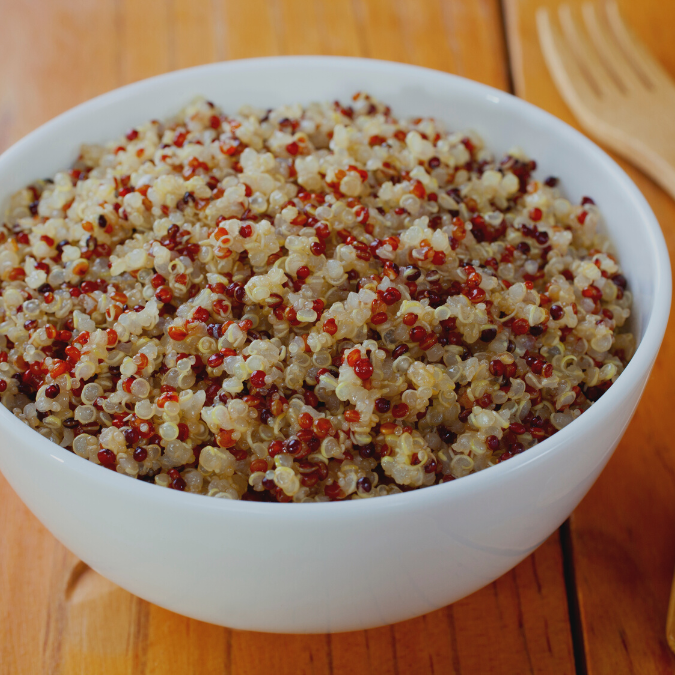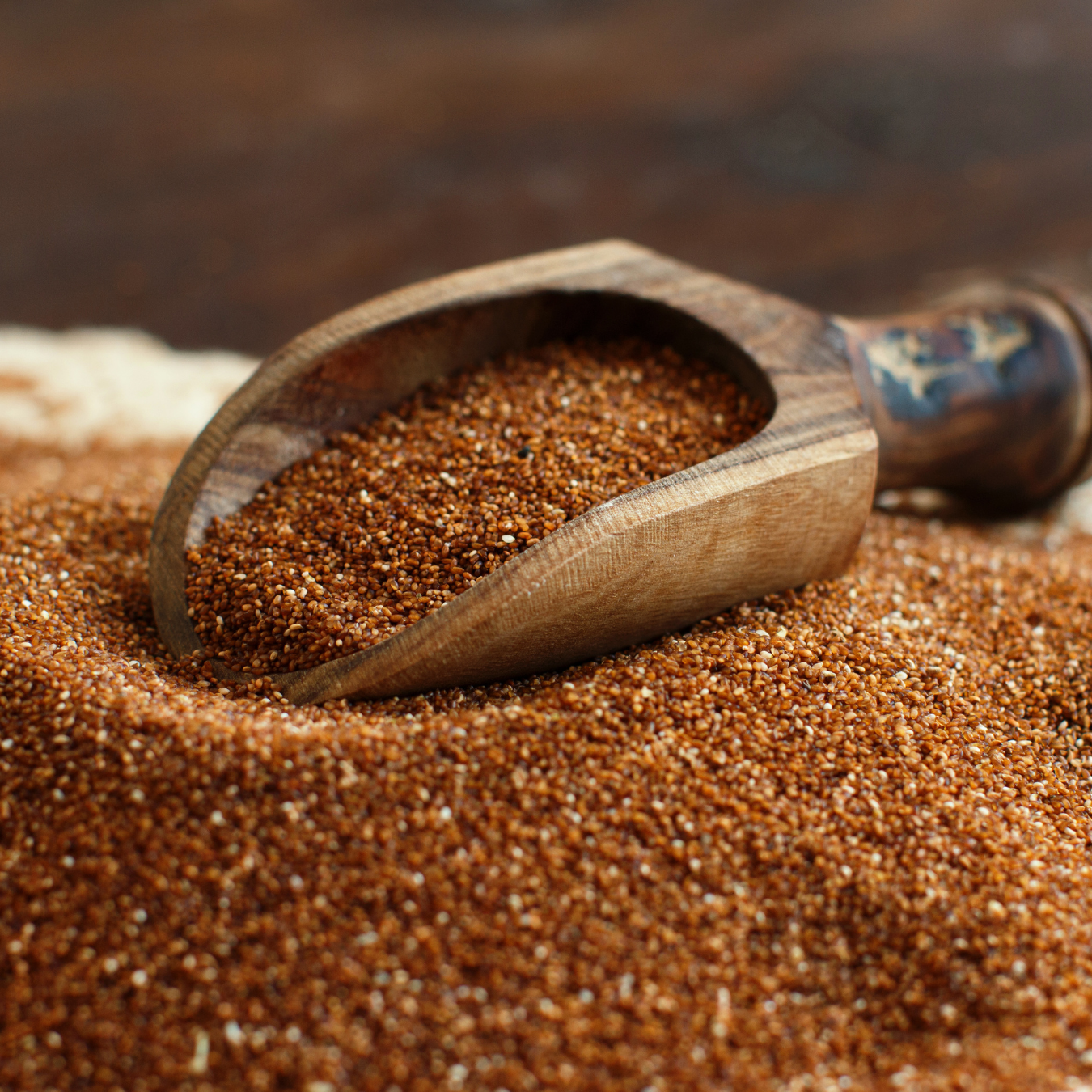The Energetics of Gluten Free Grains
Sometimes we choose to limit or cut out certain foods or ingredients. Gluten and glutinous grains are among the most common, and our reasons for cutting them out are as numerous and individualized as the varieties of grains.
Reducing or cutting out gluten doesn’t mean you need to cut out all grains. Grains are a whole food and provide a wonderful source of complex carbohydrates, fiber, protein, vitamins and minerals that create strength and lasting sustained energy.
Unfortunately, our society has a lot of confusion around carbohydrates - lumping simple carbs such as a pastry with complex carbohydrates such as whole quinoa or oat groats.
Anytime complex carbohydrates are eliminated for long periods of time the body will start to suffer. How long that takes and what form it manifests as is different from person to person, but one of the first things I’ve started to see in people on long term diets that cut out all complex carbs is that their energy level starts to drop and their muscles start to become soft and unformed, their Spleen pulse starts to soften and spread. In Asian medicine terms, Spleen Yang is starting to collapse…but that’s for another blog.
Let’s take a quick look at the carbohydrate conundrum.
Simple carbohydrates are foods that have been heavily processed - think breads, cakes, cookies, pizza crust, etc. These break down very quickly in the body and spike the blood sugar. Excess consumption of these foods are linked to obesity, insulin intolerance, and diabetes.
Complex carbohydrates are long chain carbohydrates, their fiber is still intact, and they take time for the body to break down and are used as energy. It’s these long chain carbs that are found in whole grains, lentil and legumes, squashes and roots that will give your body long lasting stabilizing energy and strength.
A mix of both — a bit simple carbohydrate, a bit complex - like a whole grain bread that has nuts and seeds in it.
There’s a spectrum —the simplest carbs have been heavily processed, stripped of their fiber, often bleached, may have additives and are often processed far from where they were grown. At the other end, is the whole grain, still in its hull that will need soaking and long cooking. In the middle is moderate processing such as a whole grain flour, etc. Get it?
Perhaps you are taking a time to clear a few foods from your diet, but don’t leave whole grains out for too long, our bodies have evolved to be able to digest and utilize them, though some people’s digestive system may need some help. Let’s face it, not many of us eat grains in the classical way – some need soaked overnight, long cooking, and are often eaten with fermented foods. Let’s look at some of these beautiful grains.
What’s a grain? Creating a little clarity.
Ah…labeling and semantics. The word ‘grain’ is commonly used to refer to both the edible fruit from grassy plants (rice, wheat, barley) and the seed crops (amaranth, millet, quinoa). Both categories of crops are used as staple foods, both are cooked very similarly, but they are different botanically. Grasses are monocots (leaves with parallel grains). Seed crops come from dicots which are broad leafed plants. For fun, and to help with clarity, below identify each of the ‘gluten free grains' as either a true grain or seed.
Gluten free grains
Grains that are free of gluten include: rice, oats, millet, quinoa, amaranth, sorghum, teff, buckwheat and corn. Each has its own unique energetic profile and healing properties. All grains are rich in fiber, vitamins and minerals, so don’t be afraid to have them in your diet. You don’t need a lot, a serving size is about 1 cup. If you combine them with the lentil or legume they can create a complete protein. Check out Protein Pairs.
Amaranth—seed
The ancient food of the Aztecs. It is delicious and easy to cook. Its mild, nutty flavor lends itself to both sweet and savory dishes. Because it thickens when cooked, it can add body to stews or soups. Try flavoring it with rosemary and thyme and serving it on crostini, with steamed greens, goat cheese and sun dried tomatoes. The dried grain can also be popped and served with a little honey. It frequents my table as a breakfast cereal. Amaranth is high in the essential amino acid lysine and higher in protein than many other grains. It is packed with minerals and vitamins and is used in treatment of heart disease, hypertension, menstrual issues and helps regulate the Blood. The seed grows easily, its beautiful red spears making a lovely addition to gardens.
Buckwheat—seed
Buckwheat is not a member of the wheat family….it is similar to wild rice in that it is a dried fruit seed. One thing to know about buckwheat is that it is naturally bug resistant, so rarely are pesticides used in non-organic forms. Buckwheat is high in potassium and bio-flavinoid called ruten, which helps keep you from bruising easily. High in phosphorus, vitamin E, calcium, and vitamin B’s, it is one of the few grains that alkalizes the blood pH. Neutral and sweet in nature, it cleanses and strengthens the intestines. It improves the appetite and cures chronic diarrhea. Buckwheat is also one of the most hardy grains that can grow in even the coldest of climates. Avoid in cases of wind (allergies, tremors, ticks, Parkinson’s disease, convulsions and epilepsy and rashes) and high blood pressure. How about soba noodles or Buckwheat pancakes?
Corn (Polenta)—grain
Corn is a part of the ‘three sisters’ group of foods, a staple for Native Americans, that included corn, with squash and legume which varied on region and culture. Corn is both a vegetable and a grain. With the addition of lysine it becomes a complete protein. Neutral, sweet and diuretic, corn nourishes the Heart and Stomach and helps to regulate digestion. Relatively low in niacin, corn is often served with lime to increase niacin absorption. Which had me wondering why no one in the movie Interstellar suffered from scurvy – I mean, they were reduced to eating just corn, right? I really am one of the worst people to watch post apocalyptic movies with, but I digressed – back on topic. As a neutral grain, it can be eaten by those with cold or hot patterns. The problem – corn is one of the largest GMO crops so be sure to find it organic. Blue corn boasts higher levels of iron, magnesium and protein. Use corn as polenta, in stew and soups or as tortillas – but get it organic. Basic Polenta
Millet —seed
Millet contains the third highest level of protein in the broad grain category, following quinoa and amaranth. It has been eaten and cultivated for centuries by the Tibetans, and eaten as peasant food for the Chinese and Japanese. It is high in iron, lecithin and choline. Millet benefits the Spleen, Pancreas, Stomach and Gallbladder. It helps keep cholesterol in check and reduces gall stones. Sweet, cooling and salty in nature in nourishes yin fluids and softens masses (stones and lumps). Millet builds strong bones, tendons and ligaments. It’s wonderful for athletes..so don’t just feed it to the birds. In 2023 the UN was named millet Grain of the Year as this little grain is exceptionally hardy, nutritious and drought resistant. It will be an important player in helping us navigate food scarcity and sustainability issues.
Oats—grain
Oats, by nature, do not have gluten in them. However, they are often processed in plants where glutenous grains are processed and therefore become contaminated. Oats contain the highest amount of fats of any of the grains. Oats create strength and stamina. They contain high amounts of easily absorbed protein, calcium, iron, iodine, phosphorus, vitamin E and all the B vitamins except B12. Warm, sweet and slightly bitter, oats enter the Stomach, Spleen and replenish and nourish the nerves. They are building so use in deficiency and failure to grow and thrive. Because of their high mineral content, especially iodine, oats are helpful in treating thyroid issues. Try whole oat groats in soups or grain salads. If you are avoiding gluten, be sure to buy them with “gluten-free” on the label.
Quinoa—seed
The staple food of the Incas, quinoa and boasts the highest level of protein in the grain category. Quinoa is high in calcium, Vitamin E, phosphorous and iron. Warm and sweet in nature, quinoa creates strength through the entire body and is one of the most easily digested grains. It helps to regenerate the Liver, nourish the Kidneys and Spleen and helps to treat depression. Quinoa needs to be rinsed to remove the natural pesticide called saponins that the plant produces to protect itself. Personally, I paused eating quinoa in the late 90’s. It had become a fad food and demand by first world nation’s demand caused scarcity, economic, and food sovereignty issues in the cultures where it is a staple food. It was a lesson hopefully well learned and not to be repeated. While the recovery is not, the situation has greatly improved. Grilled Ratatouille with Quinoa.
Rice—grain
There are more than 40,000 varieties of rice cultivated in the world ranging in color from white to black. Staggering number isn’t it? There are some varieties of rice that are glutinous, but many are not. Each grain has slightly different energetics, but as a general whole rice is neutral and sweet and nourishes the Stomach and the Spleen. It is high in B vitamins, calcium and proteins. It builds Qi (energy) and creates vitality. Whole rice can be difficult for clients with IBS and digestive issues to start with. Try mixing white rice like Basamati or Jasmine with brown rice until your system adapts. If you have a lot of dampness or parasites eat whole brown rice slightly under cooked, as it passes through the system it will pull out the excess. Rice congee is my go to for illness especially in children and elderly. I mentioned different energetics, right? Forbidden rice is a gorgeous black rice and is one of about 4,000 varieties (some glutenous, some not) of black rice and has the same energetics but adds in nourishing the Water organs of Bladder and Kidney – and it’s particularly delish with cinnamon chicken.
Sorghum—grain
Sorghum is America’s third leading grain crop – and one that doesn’t find it’s way to many people’s table. High in iron, potassium and phosphorus sorghum is another building grain. Warming and sweet, it enters the Spleen and the Stomach. Add sorghum at a 15% ratio to wheat flour in baking recipes. Sorghum is great in cookies, cakes and pies.
Teff—grain
Teff, the traditional grain of Ethiopia, dates back to 4000 BC and is the smallest grain in the world. It’s produced in Ethiopia, India, Australia and…Idaho. Teff’s name is derived from the word ‘teffa’ meaning lost, which is easy to do with this minuscule little grain. Rich red and brown color teff has a nutty sweet flavor. A 1/4 cup of teff packs 7 grams of protein. It’s high in calcium, iron, phosphorus and fiber. Teff enters the Stomach and Spleen and drains dampness. It is ground into flour for baked goods, fermented as a drink, used to thickens soups, stews, gravy or stir fry. Or eat it as sweet or savory porridge. For fun, pop a little dry teff in a skillet over medium heat until little white puffs appear. Teff porridge makes a wonderful breakfast.
Wild Rice—seed
Not a rice and not really a grain, wild rice is a seed. Like grains, it is high in fiber, use for constipation and overall bowel health and to lower cholesterol. Wild rice is high in protein and superior to white rice in antioxidants. it is also high in folic acid making it beneficial during pregnancy. Add wild rice to soups, a pilaf or stuff it into acorn squash.
A tip on cooking grains
My favorite way to prepare grains is very traditional —I make up a batch of plain rice, quinoa, millet…whatever grain I’m wanting to use for the week. It can then be easily added to soups, made into congee, added to wraps, stuffed in squash, added to vegetable and grain salads.
Enjoy!
April















